Activities
RAVELIN, THE NEWSLETTER FOR THE PATRIMONIAL FORTIFICATIONS
2024- Number 006 (march)
|
|
Published by the IFC for their members and partners 4 editions per year
|
|
EDITORIAL
|
PRESIDENT’S WORD
|
IFC NEWS
|
|
INFORMATIONS FROM OUR MEMBERS
|
|
|
|
|
PROJECT WELLINGTON-BARRIER
After a long 'period of silence', caused by the well-known pandemic, an IFC working group has restarted the Project Wellington-Barrier. The aim for 2024 is to organise - probably October 2024 - a symposium on the Wellington Barrier:
- tourism along the Wellington-barrier
- the era of Wellington as a Bolulevard d'Europe seen as a European project
IFC-CONFERENCE BERGEN OP ZOOM (NL) 2022
Text and photographs: Andreas Kupka, chairman of the deutsche Gesellschaft für Festungsforschung
From October 13th to 16th, 2022, the annual meeting of the International Fortress Council (IFC) took place in Bergen-op-Zoom (Noord-Brabant) at the kind invitation of our Dutch colleagues.
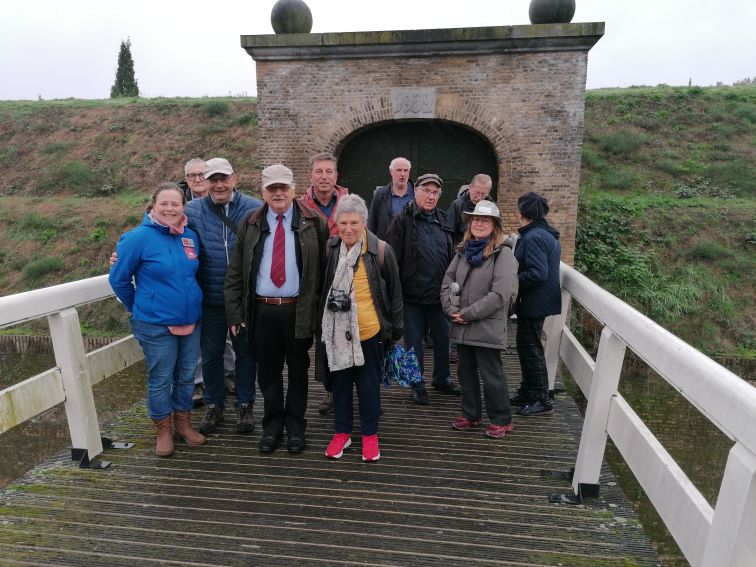
After the traditional evening welcome drink on Thursday, October 13th, by host Oscar Hefting, chairman of the Stichting Menno van Coehoorn, the ten IFC members went on a tour of the city on Friday morning. The focus here was on the remains of the former bastionary fortifications. The planning of the fortifications is generally attributed to Menno von Coehoorn (1641-1704), but the implementation took until 1744, 40 years after his death. A copy of the model of the fortress in the Paris Musée des Plans Reliefs, which can be viewed in the city's “Markiezenhof” museum, illustrates the dimensions and disposition of the fortifications with numerous forts in the surrounding area. The model, which is several square meters in size, was placed at an angle in a didactic manner so that the visitor has a good overview.
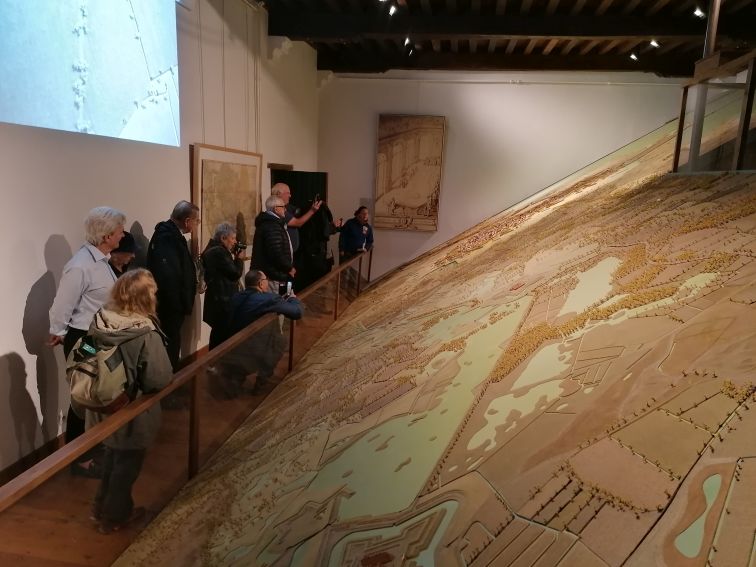
The only surviving ravelin “Op den Zoom” from 1702 with wet moats, in very good condition after several restorations, was next on the meeting program.
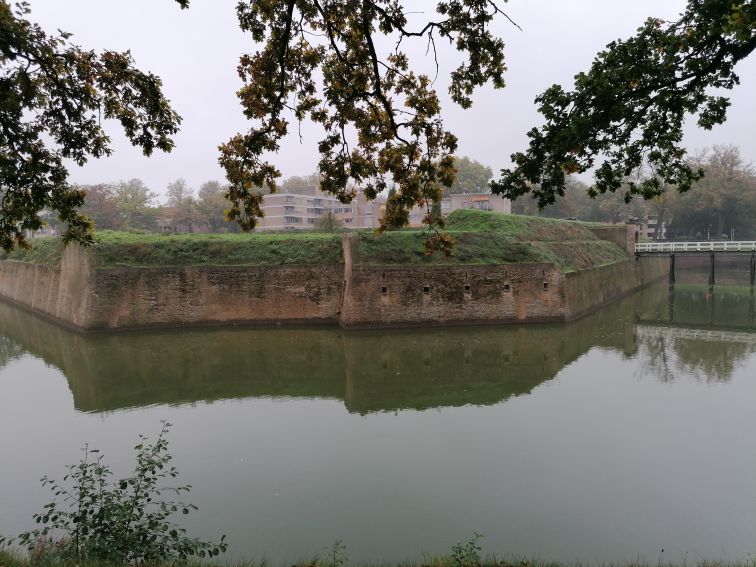
The interior area with casemate vaulted rooms, like the inner courtyard, is now used for events. In the city center, further remains of the city fortifications, which were demolished from 1868, have been preserved underground and are visible on guided tours. Particularly impressive is the section of a counter guard exposed during construction work, which was extensively preserved underground beneath the residential building “Hof van Asselbergs”.
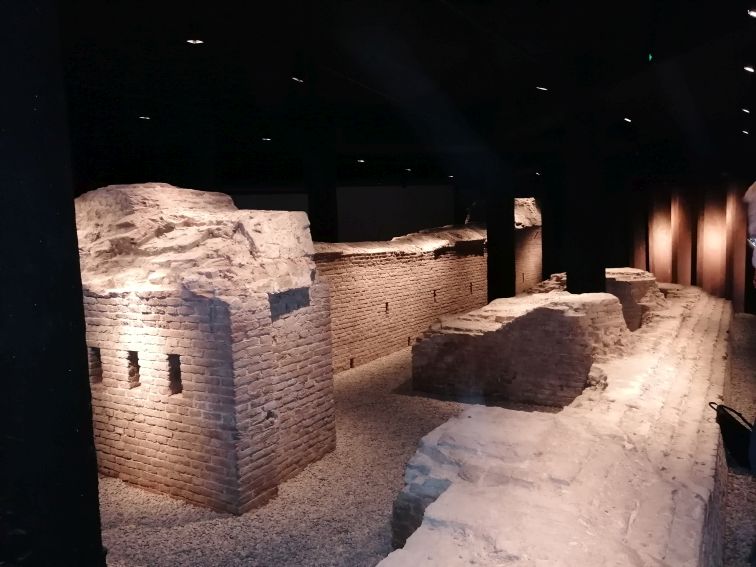
In addition to the structural remains, there are also two translocated, brick explosion chambers of counter guards, which, hidden under the glacis, could be ignited by a fuse in pipes from the counter guard, a rare fortress archaeological finding.
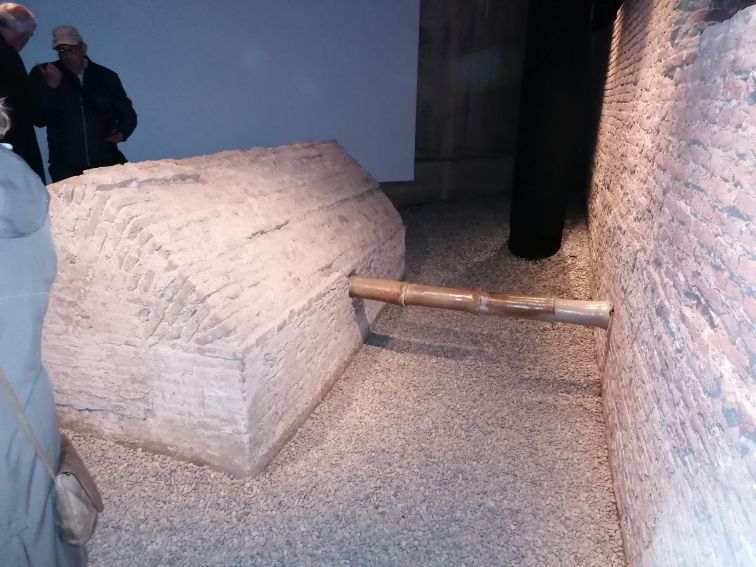
The showroom is rounded off by a multiple projection of historical processes surrounding the construction and siege of the Bergen-op-Zoom fortress. In the afternoon, the general meeting of the IFC took place in the town hall of Bergen-op-Zoom. Thanks to extensive preparation, IFC members in the USA and Italy were also able to take part in the meeting. The mayor warmly welcomed the participants with a greeting and emphasized the importance of fortress research for the city's history. The main topics were the IFC's participation in the international World Heritage Symposium in South Korea at the end of September and further cooperation with the GyeongGi Cultural Foundation (GGCF), the establishment of a new website and the financing of the Multilingual Fortress Dictionary project. In the evening, the Stichting Menno van Coehoorn invited the participants to a festive dinner in the traditional Hotel de Draak.
On Saturday, October 15th, the participants set off to visit the island of Walcheren, an important strategic location for centuries. Impressive is Fort Rammekens on the eastern bank of the Westerschelde, the “oldest coastal fort in Western Europe”, built in 1547 according to the plan of Donato de Boni di Pellizuoli († 1556), the designer of the Antwerp citadel, on behalf of Emperor Charles V. The fort with a remarkable floor plan originally protected the ports of Middelburg and Antwerp.
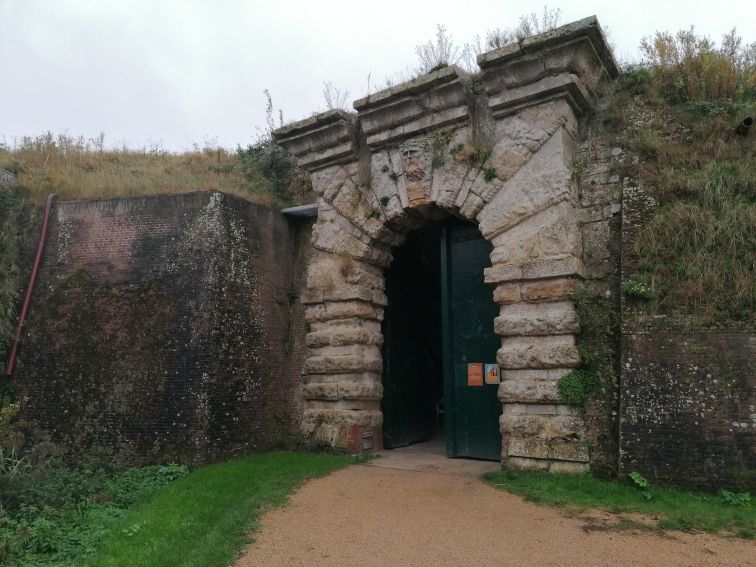
The architectural monument with its impressive Renaissance portal and Napoleonic installations is now somewhat remote and is managed by the state forestry authority. Unfortunately, the fort is partly in poor structural condition, but is definitely worth a visit with its interesting floor plan and the preserved casemates.
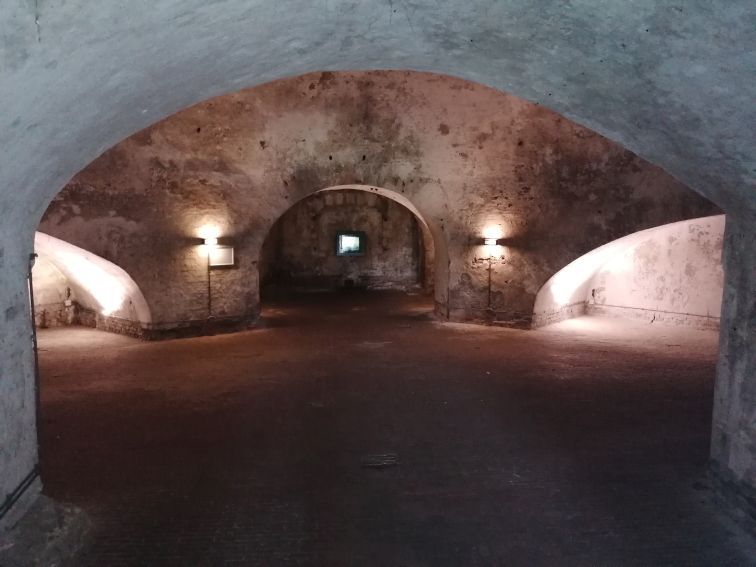
In the immediate vicinity, under the access road, there is a Type 700 concrete emplacement restored in 1991 for a 7.5 cm PAK of the German Wehrmacht from 1943/1944.
The fortifications of the town of Veere, also called “the pearl of Walcheren”, are hardly known. The prosperity of the picturesque port city was based on the cloth and wool trade with England and especially with Scotland. In the early modern period, the city was expanded into a fortress and was a military port for the Orangemen. At the end of the 16th century, Veere received a new fortification with five bastions. The bastions and ramparts, especially in the north and west of the city, are well preserved or restored and are freely accessible. Surprisingly, the impressive fortifications with a wet moat, which can also be crossed with small ferries, are not part of the tourist concept of the city of Veere.
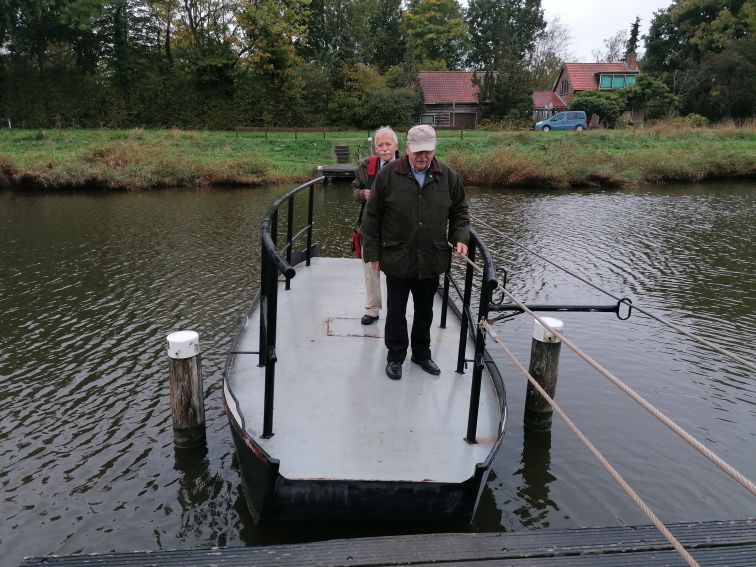
What is particularly well known is the casemated, walk-in batardeau with a monk on the bank of the city from Napoleonic times.
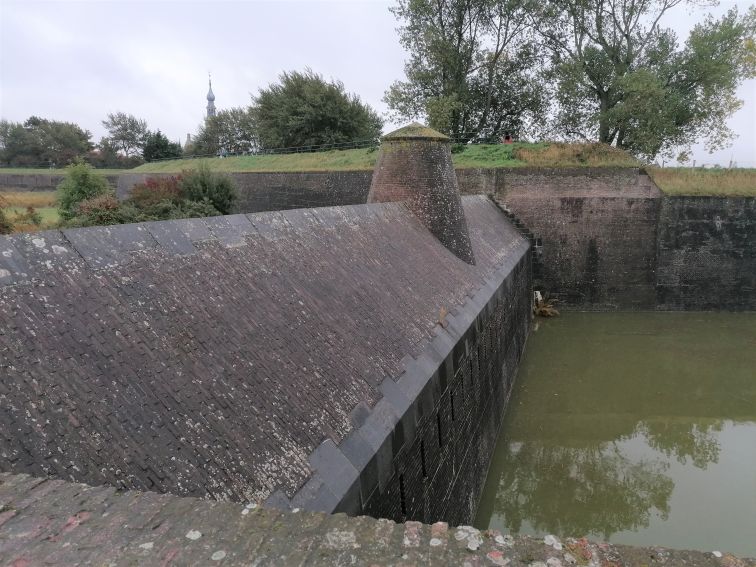
The mighty Onze-Lieve-Vrouwe or "Grote Kerk", a building from 1405, in which Anthonis and his son Rombout II Keldermans also played an important role, is impressive. The tower was built to its current height by 1512, but was never completed.
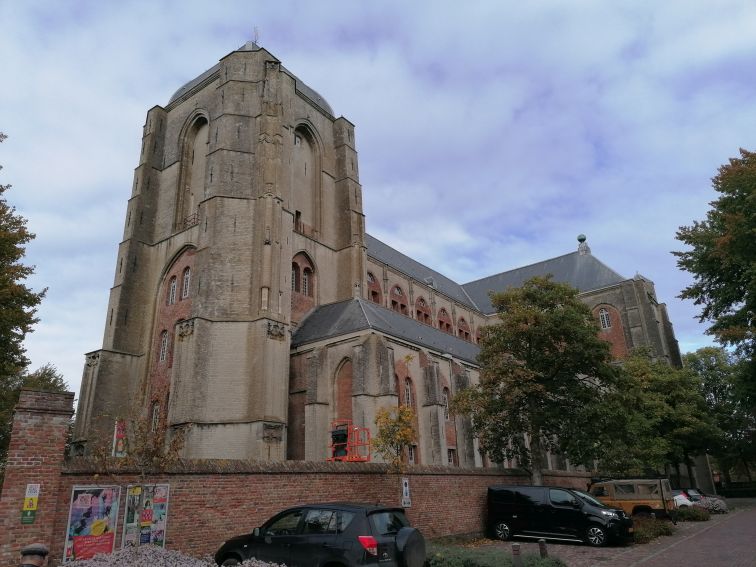
In Napoleonic times, the church was shelled by the English in 1809, damaging the roof. Napoleon converted the large building into a barracks, hospital and horse stable in 1811. After the French withdrew, the building was used as a workhouse for “beggars and tramps,” and then again as a barracks and military hospital. The church and its large interior have served cultural purposes since 1975
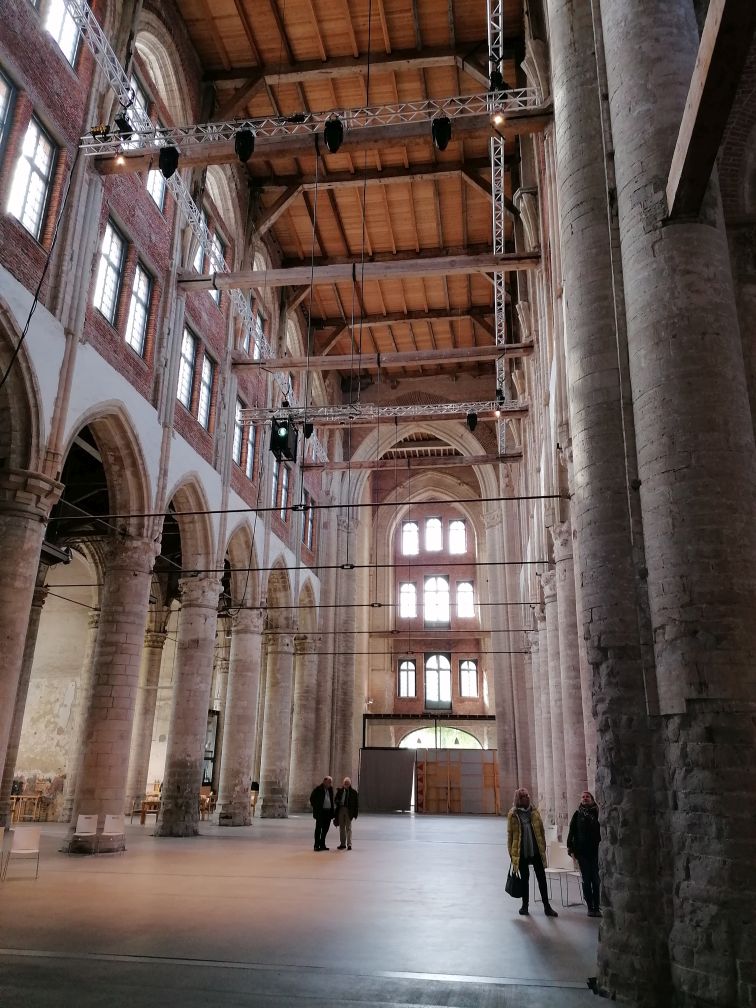
Veere is now a popular tourist hotspot, especially among Germans, but is also definitely worth a visit for fortress researchers.
In the afternoon, the IFC group first visited some remains of the Atlantic Wall in Flushing (Vlissingen). There is the “Bunkermuseum Vlissingen”, right next to the Oranjemolen on the Oranjedijk. This section of beach was codenamed “Uncle Beach” during the Allied landings in 1944. The museum, open from the end of May to the end of October, is a German artillery observation post with a small artillery observation tower of type 143.
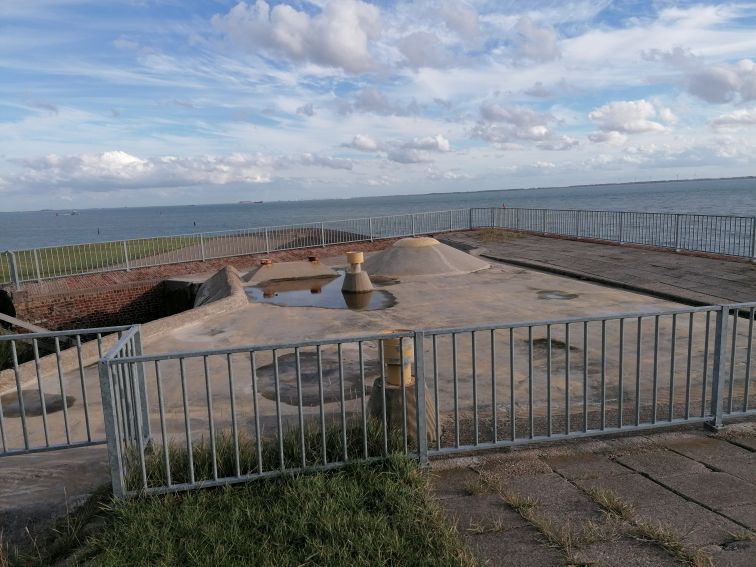
The centerpiece of this bunker is a 20 t armored steel dome, which houses a periscope for observing the coast. The associated Baskensburg gun battery was located further inland. The “Stichting Bunkerbehoud” restored the work in 2002/2004 and reconstructed the original condition with interior furnishings true to the original.
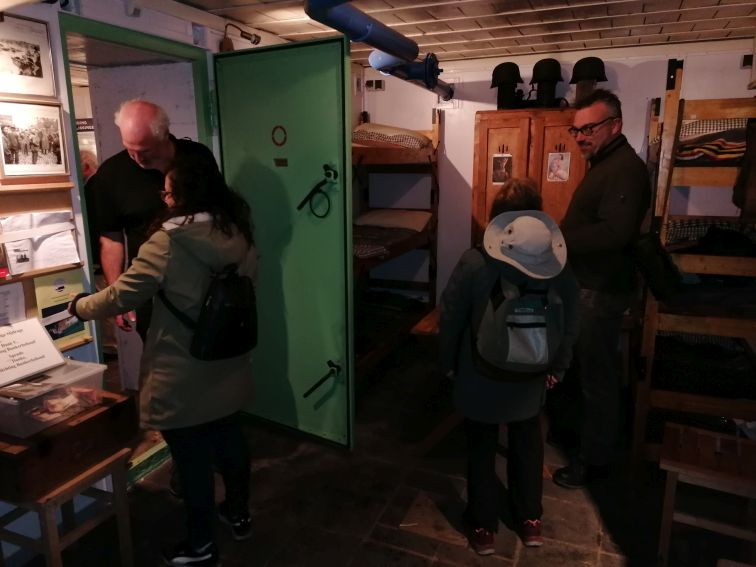
Visitors, who come primarily from the USA and England, receive a free insight into the history of the building, the German occupation period and the Allied landing in 1944.
Not far from the bunker museum directly on the beach promenade, a half-glazed container surprises another exhibit from the Second World War: a micro-submarine of the German Navy of the “Biber” type, The one-man boat ran aground off the coast of Walcheren, sank in the mud and was recovered from the Westerschelde in 1950. The “small ordnance” was restored true to the original by enthusiastic volunteers, the “Vrienden van het Maritime museum” and the Vlissingen city archives and was given a permanent place on the Oranjedijk in August 2014.
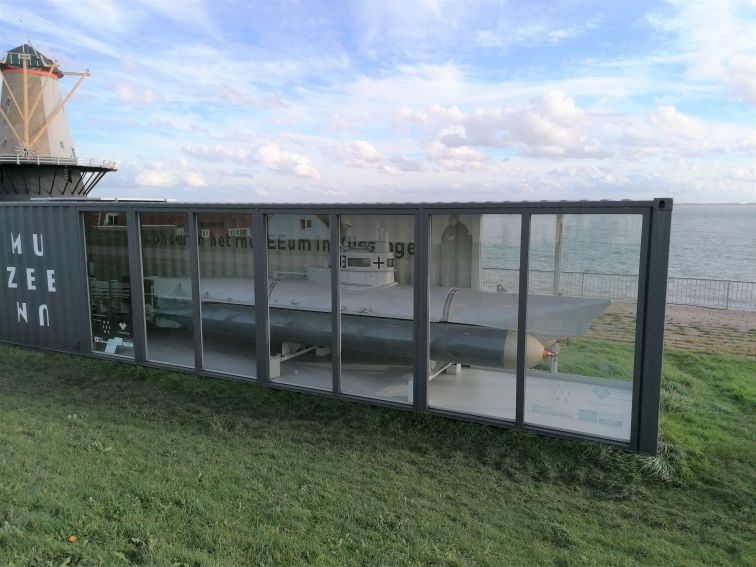
A little further towards the harbor entrance, a coastal battery from the Napoleonic period (1812) with three original guns was reconstructed.
In Flushing (Vlissingen), the ensemble with the Allied “Uncle Beach”, German bunker and submarine as well as Napoleonic battery is understood as a monument area, in the sense of a “historical mile”: an interesting example of how our Dutch neighbors deal with witnesses of warlike relics from different eras and conflicts .
Back in the 16th century, the IFC members took to the harbor fortifications of Vlissingen, also designed by Donato de Boni, which were built during the reign of Emperor Charles V to reinforce the Westerschelde and protect it from attacks from the sea. As the so-called “Waterpoort” (water gate), the “Keizersbolwerk” is the only still intact city gate in Vlissingen, which was built in 1548 on the orders of Mary of Hungary, the governor of the Spanish Netherlands.
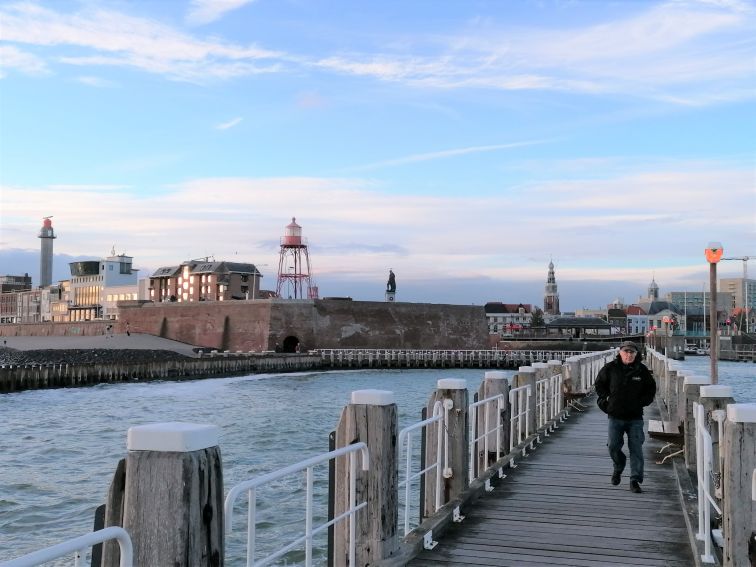
This harbor bastion with high sides and faces consists of an escarp wall made of bricks with three gun and two musket emplacements on the harbor side.
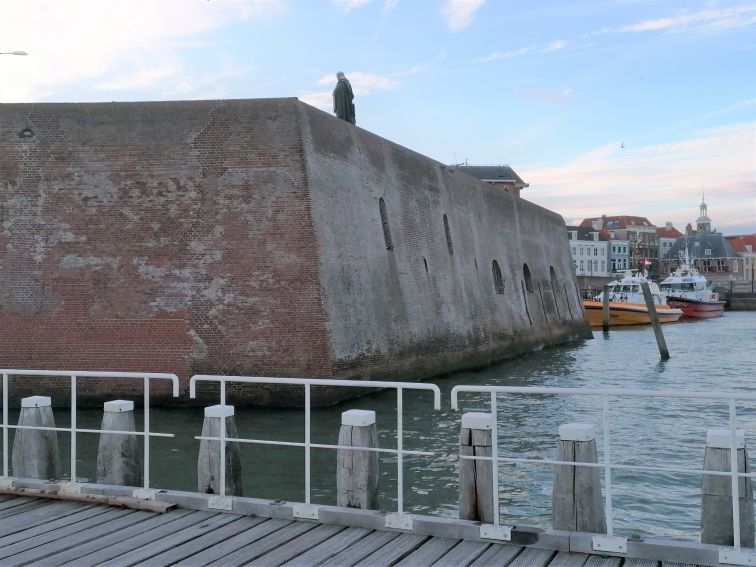
From here, Emperor Charles V left the Dutch territory on September 15, 1556 to finally settle in Spain. During the French era (1795-1814) the Keizersbolwerk was greatly expanded and developed to its current state with a bomb-proof roof structure and earth covering. On Napoleon's orders, thirteen casemates were built into the fortress in 1811 and a narrow posterne was built from the water side (Roeiershoofd) to the city center (Beursplein). A garrison bakery was also built, which remained in operation until 1907 and is still visible today. The Germans installed a fortified torpedo battery at the head of the Roeiershoofd in 1943, the foundation of which is still visible in the water at the end of the jetty. The torpedoes were stored in the casemates and transported on a narrow-gauge railway. Today a road leads over the building, but it is freely accessible.
The visit to the forts Lillo and Liefkenshoek, near Antwerp at the mouth of the Scheldt, planned for Sunday, the last day of the meeting, had to be canceled for organizational reasons. That's why the group went again to the magnificent Markiezenhof, the late Gothic city palace (1485) of the Lords of Bergen-op-Zoom, which today houses three museums that show, among other things, baroque furnishings and interesting exhibits that are worth seeing, as well as a pretty formal garden area with a cafeteria offers. In summary, the IFC members experienced a successful conference with interesting insights into the diversity of the Dutch fortress heritage. (Andreas Kupka)
PROJECT WELLINGTON-BARRIER
Colloquium 25th April 2019 Namur
Read: The Southern Frontier, Masterpiece or historical miscalculation (by Joop Westhoff)
/files/Southern_Frontier,_Saillant_2014_III_EN_with_illustrations.pdf
Simon Stevin V.V.C. and the Menno van Coehoorn Foundation under the auspices of IFC have joined forces to set up a project around the Wellington barrier. Partners in the project are also the Province of Namur, Efforts , and the Frënn vun der Festungsgeschicht Lëtzebuerg.
Until today, the importance of the Wellington barrier for the development of fortification and military engineering in Belgium, the Netherlands and Luxembourg has been underestimated.
The aim of the project is to develop a knowledge network that ultimately leads to an overall picture of how this imposing barrier works, its opening up and redevelopment.
About the Wellington barrier.
After the fall of Napoleon, at the initiative of the Great Powers, the construction and adaptations of a series of fortifications and fortresses along the northern border of France were ordered: the Wellington barrier, an impressive line of defense that can rightly be called a European cooperation.
The British and the Dutch together designed and built the reinforcements and had this partly financed with French money.
_exp.jpg)
La Tour Carré Namur (all photo's by Hijlke Bakker)
As a start of the project, a first colloquium was organised on 25th April in the Citadel of Namur. Invited were associations, foundations, but also (local) historians and other stakeholders and interested parties to get acquainted with this project. More than 40 people attended.
The ambition is to identify which elements of the Wellington barrier are still visible, what history they have, what state they are in and what research questions are still open.
Marie-Françoise Degembe, Head of Cultural Heritage and Heritage Province of Namur welcomed the particpants.
After that an Introduction to the Wellington barrier project was made by Luc Olyslager - CEO Simon Stevin V.V.C., Dennis van Nieuwenhuijzen - Project Manager Wellington Barrier and Raf Deroo, EU liaison EFFORTS.
The cooperation between the International Fortress Council and Efforts, Raf de Roo, EFFORTS
_crop_exp.jpg)
Introductions:
The Wellington barrier: past, present and future, David Ross - Project Wellington
The Wellington barrier in the political and diplomatic context, Prof. Beatrice A. de Graaf Utrecht University.
Les derniers bastions? Theory de la fortification au début du XIX siècle, Prof. Philippe Bragard - Université Catholique de Louvain.
_cropexp.jpg)
Innovation in fortress construction according to the polygonal system, Prof.ir. Piet Lombaerde - University of Antwerp.
_crop_exp.jpg)
Towards an intimate and complete military history of the United Kingdom of the Netherlands, Jurrien de Jong - Netherlands Institute of Military History.
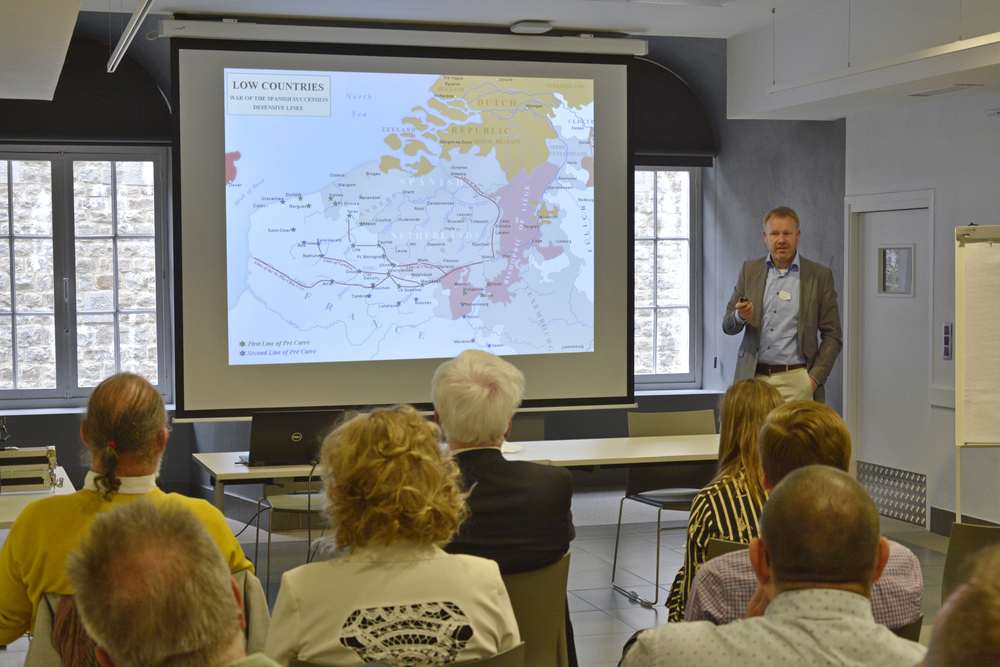
REPORT FROM IFC-PRESIDENT ANDRES KUPKA AT GENERAL ASSEMBLY 2018
28th Annual Meeting of the International Fortress Council in Italy
The 28th Annual Meeting of the International Fortress Council (IFC), the International Federation of Fortress Research Societies in Europe and the USA, took place from 11 to 14 October 2018 at the invitation of the "Associazione Forte di Bard" in the Italian Aosta Valley.
The Fort of Bard dominates on a rock the river valley of Dora Baltea above the small village of Bard. The current fortress was built on the orders of King Charles Albert of Sardinia-Piedmont between 1830 and 1838, after the predecessor building was demolished and completely demolished in 1800 on the orders of Emperor Napoleon I. In May 1800, after their passage across the Great Saint Bernard, the French troops needed two weeks before they could continue their march following the massive shelling by the 400 men of the Austrian crew of the fort. Napoleon finally led the attack personally and after the capitulation of the occupation on 1 June 1800 he ordered the demolition of the fort.

The conference participants against the backdrop of the Aosta Valley in Forte di Bard (Photo: Andreas Kupka)
With great financial commitment of the regional administration, the imposing plant was restored in accordance with the monument and opened to visitors in 2006. The fortress now houses various exhibitions and three museums, including the Museo delle Alpi / Musée des Alpes, which informs about the nature and history of the settlement of the Western Alps, and the fortification museum of the Fortification in the Cantiere Ferdinando, designed by Alain Monferrand, President of Association Vauban. A café and a hotel as well as meeting facilities round off the tourist offer, which attracts 500,000 visitors a year.
Thursday was again the general arrival day, when 15 participants from eight countries met for a casual, informal dinner and were warmly welcomed by the dedicated Forte di Bard team.
On Friday, the expert group visited the extensive fortress complex with the three museums in the morning. After a lunchtime snack, the 28th official working session of the IFC began in the Salle Olivero of the fortress Bard.
Dominant topics were the possible admission of new members such as Greece and Poland, with representatives of both countries contributing brief presentations. Malta is expected to join the IFC in 2019. Due to recent events, the founding of a corresponding Italian association has been widely discussed. The continuation of the IFC project "Multilingual Fortress Dictionary" (MFD), for which funds are now to be raised, was also on the agenda.
For dinner, at IFC meetings traditionally hosted by the hosting organisation, the Assosiazione di Barde invited IFC representatives to the Fort's restaurant "La Polveriera". Representatives of regional politics met there and the IFC was welcomed by the director of the Forte di Bard. M. C. Ronc.
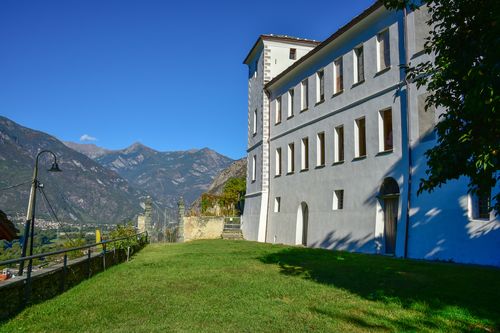
On Saturday morning, the IFC group had the opportunity to visit the Castello Vallaise d'Arnad under the direction of the local monument conservator, a restored nobility seat with exceptionally rich wall and ceiling paintings.
(Photos: Pascal Bruchez)
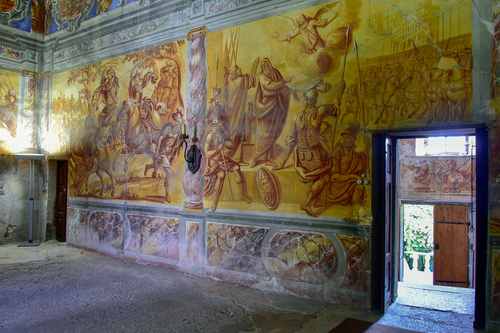
One reason for inviting the IFC was the initiative of the energetic director of the "Associazione Forte di Bard". M. C. Ronc, who has asked the IFC for assistance in founding a national fortress research organisation in Italy. For this purpose, on Saturday afternoon, representatives of several Italian fortified towns, among others, from Verona, Alessendria, Venice, had gathered in the Forte di Bard for a first meeting, which also aroused the interest of the Italian television RAI 1. The IFC representatives gave their full support to this initiative, whose priorities had already been prepared in advance with the IFC, and will make their long-term experience and international contacts in the rescue and valorisation of historically important fortifications available to their Italian counterparts. First steps have already been taken. A close exchange between IFC and the Forte di Bard team was finally agreed by mutual agreement.
Finally, we would like to thank the organizers of the conference, especially Dr. M.C. Ronc and her team on behalf of the IFC for this successful and result-oriented event as well as the warm welcome. Particularly noteworthy is also the commitment of Alain Monferrand at the conclusion of this meeting.
The Board of the IFC hopes that this most welcome initiative will find fertile ground and soon host a national Italian Association of Fortress Researchers as a new, twelfth member of the IFC.
Andreas Kupka
INTRODUCTION TO POLISH FORTIFICATIONS
by Igor Strzok, Fort de Bard, October 12th, 2018
In his over 1000 year long history as a state, Poland was on the border of Western and Eastern Europe, with all cultural and political consequences. In the matter of fortifications, in early Middle Age its natural resources have privileged earth-wooden constructions, which could not persist otherwise than in the form of archeological sites. Fist use of stones or bricks for castle construction has started in the 12th century, firstly in Silesia.
Teutonic Order implementation on Polish northern border, than in captured Polish Pomerania confronted the country with specific type of brick fortifications, the best example of which is Malbork.
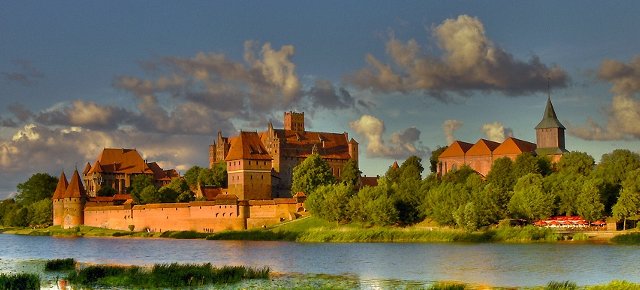
Malbork
Early artillery fortifications, developed in 16th century, were erected mainly on East-southern borders, facing Tartar and Ottoman threat, then more advanced, based on Italian style, started to be constructed to protect northern cities and aristocratic residences. 17th century was marked by spreading of old-Nederland school, as we can see till today in Gdansk and even in Smoleñsk, where the most advanced toward East "western-style" pentagonal citadel was constructed by king Vladislas IV Vasa.
Aerial view of Wisloujscie fortress in Gdansk
The surface of "Commonwealth of Kingdom of Poland and Grand Duchy of Lithuania", about 1 000 000 km2 at the beginning of 17th century has privileged the strategy of maneuver war and not static one, so expensive bastion fortresses were scattered and in case of wars often completed by large "camps retranches" for big, cavalry-dominated, armies. The crisis of the country in 18th century stopped the development of Polish fortifications, and, when culminated with partition between Russia, Austria and Prussia, brought to polish lands the constructions of occupants. Especially a big number of Frederic the Great fortresses, like Grudziadz or Srebrna Gora can still be seen. Napoleonic wars left behind new fortifications of Gdansk and, especially, Modlin, the biggest Napoleon's fortress in Europe, extended later by Russians. Still divided by occupants till First WW, Poland is retaining till now many Russian, German and Austrian fortresses, such as Grudziadz, Torun, Gizycko, Poznan, Nysa, Kozle, Krakow, Przemysl, Deblin, Warsaw, Osowiec.
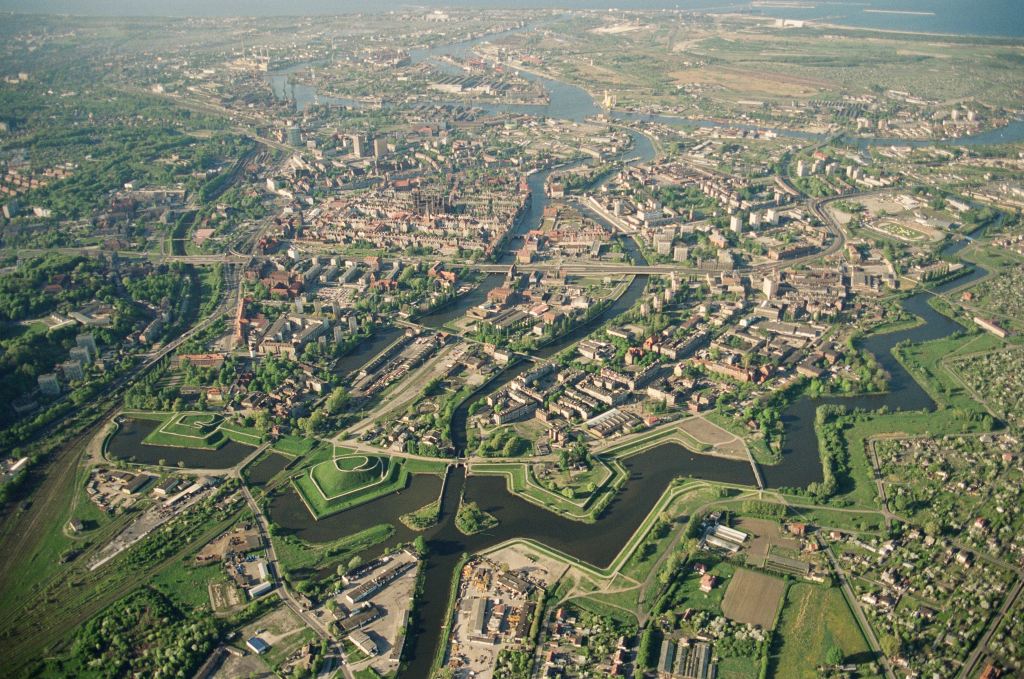
Gdansk
The period of WW II is represented as well by Polish fortifications as by Soviet (erected on soviet-occupied half of Poland) and German (constructed mainly before the war). Last constructions - anti-atomic centers of command erected for Soviet Army in case of the attack against the West and the shelters for nuclear heads are now, partially, opened to the public. In Poland there are many groups, especially of young people, fascinated by fortifications, but a national-wide organization, TPF (Society of Friends of Fortifications), born at he end of 1980, does not exist any more.
ACTIVITIES REPORTS IFC-MEMBERS
UNITED STATES

COAST DEFENSE STUDY GROUP
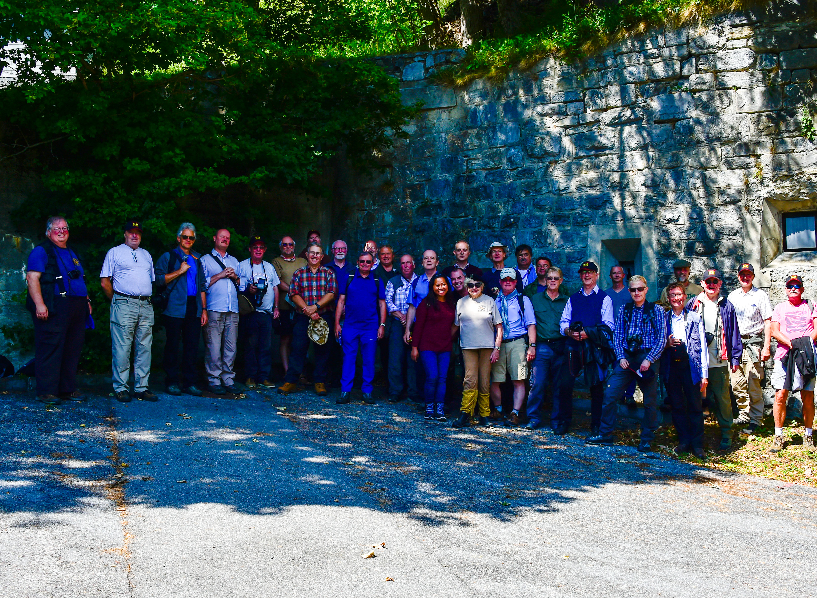
This is from the joint CDSG and FSG tour to the Defenses of Switzerland that was hosted by ASMEM in August 2018. Three IFC associations working together to have a joint tour. Example of what the IFC members can do more of in the future.
UNITED KINGDOM (2016-2017)
[No recent report received, the Editor]

FORTRESS STUDY GROUP
Membership: Numbers have dropped slightly to about 530, but this is due in part to a more rigorous check on members in relation to our new web site. It is assessed that some of the lapsed members will re-join later. Nevertheless, there is an overall decline in membership numbers and a dearth of new younger members.
The annual MEMBERS DAY was held in London in 4th June 2016, when 25 members, some of whom made presentations on diverse subjects from the Defences of Gibraltar to early American Forts. It is believed putting back this meeting to June, rather than the usual April, may have impacted on the number attending.
Publications: FORT 44 (2015) the international journal of fortification has just been sent out to members.
The magazine of the group, Casemate, is published every four months. The September issue has just been delivered to members.
Guide booklets for the study tour of the Balearic Islands and the conference at Chichester/Portsmouth have also been published and distributed to interested parties.
Events:
The annual STUDY TOUR visited the Balearic Island of Mallorca and Menorca. Despite being split between the two Islands this tour was judged a great success thanks to assistance from the Spanish Military and local heritage organisations. The timing was ideal because the military are just handing over many of their old sites, and they are still very much as left by the Spanish Armed Forces. (Note: the initial plan for the Study Tour was to The Dolomites, but the organiser resigned. Hence the change of venue. A salutary reminder how dependent we are on volunteers.)
The FSG CONFERENCE and AGM was held at the University of Chichester between the 3rd and 5th of September when 43 members visited various fortifications and other military sites around Portsmouth.
In 2017 we will conduct a full Study Tour to Malta and a shorter tour will be made to Alderney, Channel Islands.
Digital Future
As with many organisations, the Fortress Study Group is adapting to the new digital era and advent of social media as a significant medium. Considerable effort have been made in the last year to increase the digital profile of the FSG.
FSG Website: The web site has been redesigned over the last few months and is still a work in process. The number of individual visitors per month to the FSG website increased to around 550 with 57% being new visitors. This is slightly up from the old web site which was usually about 450- per month. Analysis of the traffic reveals that 45% of the visits come from the US and 33% from the UK. Interest by the rest of Europe is minimal, with German and Spain having 1.48% of the traffic each.
FSG Facebook: The FSG now has an active Facebook Page and this now has in excess of 960 and a reach going above 3,000 people. This can be developed further.
Defence of Gibraltar: This is an active web site, intended to plot military installations in Gibraltar. There are now in excess of 630 items mapped on the web site and it is growing steadily. This site has about 260 visits a month, predominantly from the US and UK (90%) and marginal interest from the rest of Europe apart from Spain with 2.19%. Nevertheless, this is believed to be a worthwhile effort in the digital environment.
FSG Twitter: Not a major success but at least we are in the space. There are presently 171 Followers and we Follow 61. A total of 273 Tweets sent. Probably needs integrating with the web site at some stage.
FSG Library
The FSG has a public access Library, held at Fort Nelson, which has had no visits and only one request for access (which was thwarted due to a rival supplier of info being found). There is now a complete catalogue available on the website. The Library appears now to be a “memory pod” and unused. It’s value is very moot. Consideration is being given to handing over the collection to the Royal Armouries at Fort Nelson.
Gordon Fordyce Fortifications Grants Fund
Gordon Fordyce left a considerable amount of money with the FSG to be to support appropriate works. Some of this money he has specifically designated by distributed by the FSG to named organisation in France. We have sought the assistance of the Association Vauban in identifying and contacting these organisations.
General Remarks:
As previously reported the FSG now makes awards to various bodies for their work in restoring and re-using fortifications in a sympathetic way. Awards have been made to various organisations including Cap Rocatt Hotel and Chapel Bay Fort. We are presently drawing up a more detailed criterion for awarding these plaques and any grants.
The Future:
We are currently attempting to amend our constitution, primarily to bring it into line with current legislation – as we are a registered charity - which has changed over the last decade.
It would appear that there is now a shortage of volunteers to run the organisation at a national level and even less interest at a regional level. We are currently having problems finding a new Treasurer and many of the older volunteers are now withdrawing.
FORTRESS STUDY GROUP – REPORT of ACTIVITIES 2014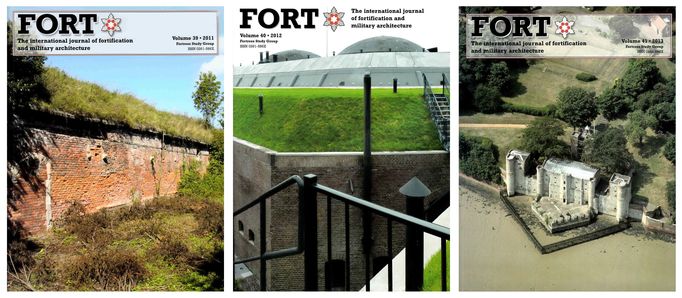
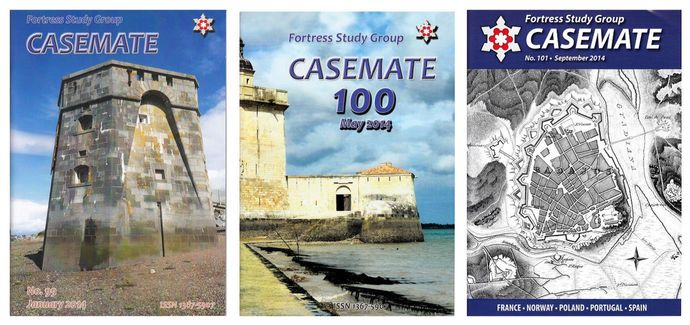
CZECH REPUBLIC
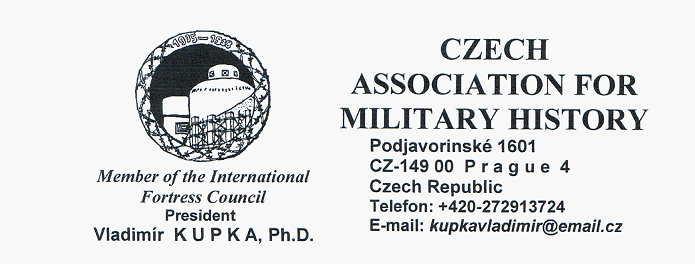
The Activities of the CAMH in 2013 [No recent report received, the Editor]:
- 151 members, 150 from the Czech Republic and one from Germany. Continuous cooperation with several regional societies in the Czech Republic.
- Two gatherings - in May a visit to the light fortifications from the years 1937-1938 in Southern Bohemia and, in November a meeting in Prague.
- Three volumes of our Magazine: OIN.
- Three trips to: Alsace, Sicily and Denmark.
Prospects for 2014:
- Two gatherings – in May in Northern Bohemia visiting the heavy fortifications from the years 1937-1938, in November a meeting in Prague.
- Planned trips:
- June 2014: Menorca
- August 2014: Maginot Line in the Alps
- Expected publications: Artillery and Fortifications 1867-1918
CROATIA
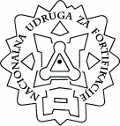
Nacionalna Udruga za Fortifikacije N.U.F.
[No recent report received, the Editor]
In 2015 Nacionalna Udruga za Fortifikacije continued cooperation with various organizations and institutions as well local as international. On a local scale, NUF focused on raising awareness about importance of national heritage in Croatia among professional and as well as non-professional community members.
NUF was involved in organising various debates, open discussions and projections of documentary movies referring to the subject of fortifications in Croatia, cooperating with a local initiative and small cultural centre ‘Kutika’. Numerous events took place in the office in Zagreb:
- Debate “Pula - Fortification system, the main naval port of the Austro-Hungarian Empire”.
- Discussion about the appropriate care for the historical legacy of the war.
- Presentation of outcomes of volunteer actions of cleaning the fortifications in and around Pula organized by Mr. Zlatko Devedžić.
- Projections of various documentary movies about different fortifications in Croatia, accompanied by debates: “Unknown Pula” (“Nepoznata Pula“), „Cultural Landscape” ("Kulturni krajolik"), „Fortress in Slavonski Brod” ("Tvrđava u Slavonskom Brodu), „Slavonski Brod – Fortress” ("Slavonski Brod – Tvrđava")
NUF organized and participated in a professional study trip in Topusko fortified monastery remains of ramparts.
Besides local activities, NUF representatives attended study trip in Komarno, Slovakia and an international conference in Hungary which took place on 26 - 27th October, 2015.
Stjepan Lončarić , N.U.F., president
NETHERLANDS
 STICHTING MENNO VAN COEHOORN
STICHTING MENNO VAN COEHOORN
( 1-10-2017 / 30-9-2018)
MEMBERSHIP:
Number of members: 1015
PUBLICATIONS:
Saillant (quarterly, format A-5, 45 pages)
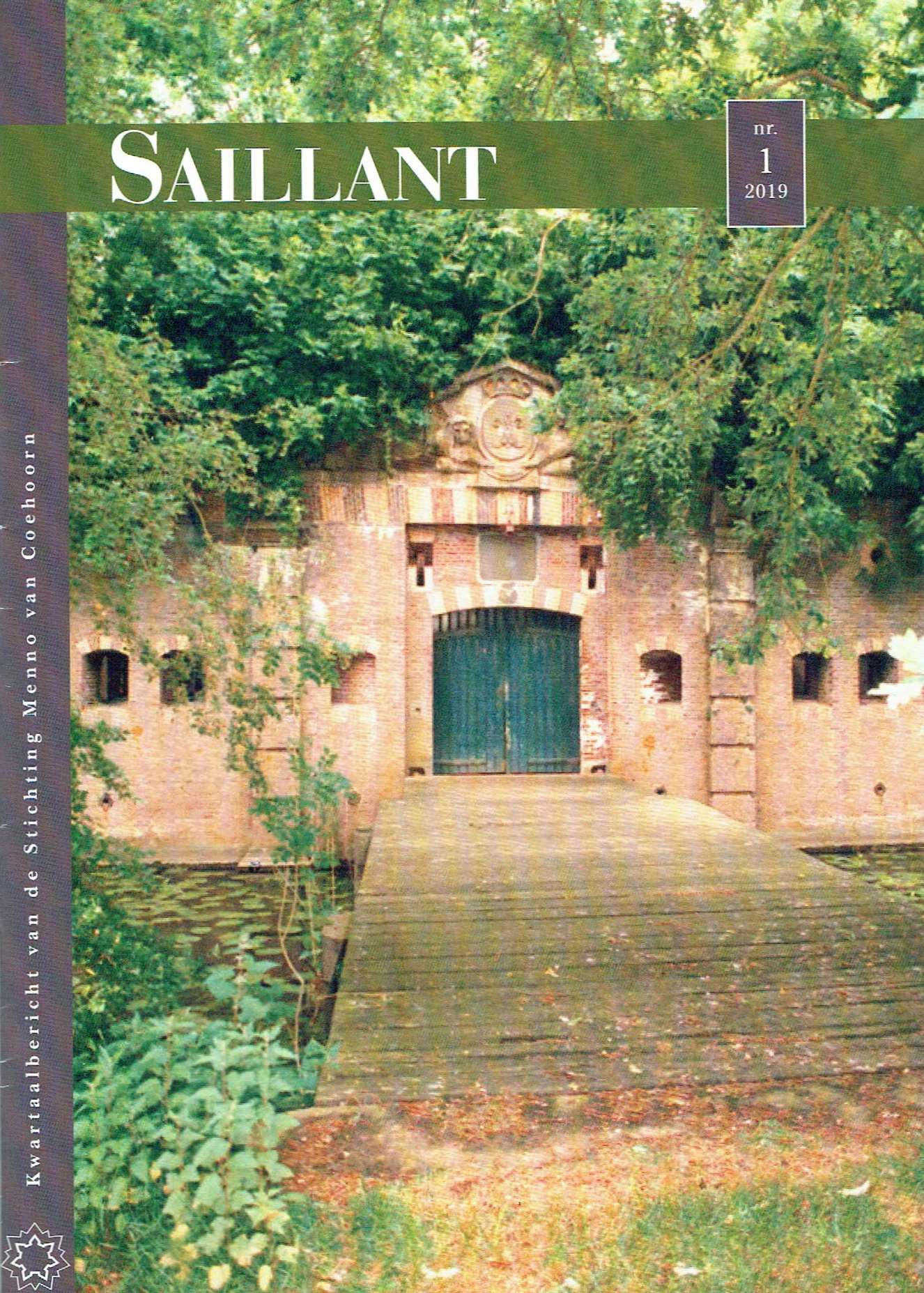
EXCURSIONS
2 excursions for active members
3 excursions for all members
1 National meeting for all fortification- organisations in the Netherlands
These excursions went to Doesburg and Zutphen (including WW II history), AtlanticWall Scheldt (Walcheren-Flushing) and the Amsterdam reduit (Stelling van Amsterdam), Fort bij Uithoorn, Fort aan de Drecht and Fort bij De Kwakel.
The national meeting was organised in the Maastricht fortifications.
RECENT DEVELOPMENTS
Preparations for the nomination of the Roman defence line along the Rhine river, the Limes Netherlands as UNESCO World Heritage. Nomination of the New Dutch Waterline, related to the Stelling van Amsterdam.
The 2018 Open Bunkerday (Atlantic Wall) was held in June in the Netherlands, Belgium and France.
The Statutes were changed and now make Menno van Coehoorn active in the preservation of all fortifications, including those still used by the armed forces, and all Cold War relics.
Together with Belgian Simon Stevin a working Group has been installed to start study of the Dutch barrier.
With the Paris-Treaty of 13th August, 1814 the United Kingdom an the Netherlands took on them the obligation to establish and maintain along the southern border of the United Kingdom of the Netherlands several fortifications a barrier (in English, the Dutch Barrier, in Dutch, the Wellingtonbarrière)
- The idea of this barrier was based on the barrier-principles of the 18th century
- The barrier was from 1815 on developed by Dutch engineers
- Fortifications in Gent (Citadel), Dendermonde, Liège (Citadel), Hoey (Fortress), Charleroi, Mons (Hainaut) and Dinant (Fortress) were completely renewed, and Ostend, Nieuwpoort, Ypres, Menen, Doornik, Oudenaarde, Antwerp, Philippeville, Mariënberg, Bouillon, Namur, Ath and Luxembourg were radically changed or restored;
WEBSITE:
www.coehoorn.nl, including the Multilingual Fortification Dictionary, and a national database on fortifications. All books and documents can be found via the website; most of this material has been scanned and is available at low resolution.
FRANCE
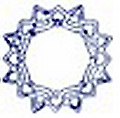
ASSOCIATION VAUBAN
ACTIVITIES REPORT
(1st October 2017 – 30th September 2018)
ASSOCIATION VAUBAN
President Alain MONFERRAND
MEMBERSHIP:
Number of members: 154
PUBLICATIONS:
- Oisivetés: “ La Lettre des Oisivetés” Journal of the Society (2 éditions per year in may and december), Nr 34 December 2017 and Nr 35 may 2018 ,
- Quarterly Newsletter « l’Escarpe » dedicated to regional events
- Dossier for the annual congress in CAMBO LES BAINS
- Dossier for the study tour in POLAND.
PUBLICATIONS IN PROGRESS:
Salin (Patrick) work on a compilation of the Frenches fortifications in Northern America (Canada and USA). This book must be published in Canada and France. Association Vauban help Patrick Salin to find a French editor.
Finalization of the translation Italian to French with the support of A.V. for the book of Franco Carminati (delegate of AV for the Italy) about the Pinerolo Fortress. Publication of the book in the next weeks.
EVENTS:
MARCH 23 th – VAUBAN MEMORIAL DAY.
This annual ceremony was held at the Royal Chapel of the Dome des Invalides in Paris, Alain MONFERRAND presiding. Among the persons present were Lieutenant General Bernard Fontan Head executive engineer of French Military Infrastructures, Lieutenant-General VITRY Association VAUBAN Vice-President, Army General Christophe de Saint Chamas, Governor of the Invalides, the Army Corp General Bernard Fontan, General Director of Defense Infra Service, “administrative” heir of Marechal Vauban, which help always our action and the Major General Dominique Cambournac, Army Heritage delegate which come fort this memorial day fort he first time, several of Marshal de Vauban’s family members, the board of the Association VAUBAN, the Fellow members of military engineers for infrastructures (IMI) and numerous visitors of the Royal Chapel.
MAY–ANNUAL CONGRESS- DEFENCE ZONES OF CAMBO LES BAINS AND WEST PYRENEES MOUNTAINS (South West France) from 10 to 28th of may
The land forts of French Border :
Saint Jean Pied de Port (UNESCO site) Citadel and City Wall,
Navarrenx Place and The Portalet Fort, Oloron Sainte Marie Place
City of Bayonne (reception by Sophie Castel, deputy Mayor for the urban patrimonial), visit of the Citadel (as the base of the 1st RPIMA)
The Spanishes Fortifications :
St Bartolomé Fort (Pampelune), Citadel and Labrit Bastion, Hondarribia (Fortifications and City Wall), Guadalupa Fort
CONFERENCE MAIN ITEMS:
Conference at the Arnaga Orangery (Rostand Property).
- The Bayonne Fortifications fron Lapurdum (antik place) tot he Vauban Defences by Olivier Ribeton, Chief Curator of the Basque Museum of Bayonne.
-The end of the Kingdom of Navare until the construction of the Navarrenx Place by Alvaro Adot, Dr Pf of History at Pampelune University
- Pre-Vauban military engineers in Europe by Huagues Paucot Ds of Sc from Bruxelles University
- The story of Portalet Fort et the Restauration of the place by Bernard Choy, Mayor of Aydius (Commons Commauty of Haut Béarn) and Estelle Salvayre Sports Direction of the Haute Pyrenées Department.
SEPTEMBER – ANNUAL STUDY TOUR IN POLAND (NORTHERN POLAND)
13-15 of September :
Malborck Castle
Gdansk (Old City, II WW Museum, Hagelsberg Fort, site of the Dantzig Battle (1807), Bishofsberg Fort Wiloujscie (Fort Weichelmund), Gdansk Arsenal
Torun (Citadel and Fortifications, Fort IV, Fort I et II
Modlin (Frenches fortifications and Russian Forts, Polish fortifications before the WW II)
During the visit of the site of the Dantzig Battle of 1807, a military commemoration was organized at the Gdansk French Cemetery with the participation of the Polish army, the French Army Corp Général Bernard Fontan, director of Defence Infra Service, Lt Col Alain Petitjean, Chargé de mission to the general Commander of the School of Engineering of Angers and Lt Col, Philippe de Laborie, Curator of the Angers Military Engineering Museum and Martin Barros, Director of the Military Historical Librairy of the Defence Ministry. A l’issue de cette cérémonie, le Général Bernard Fontan, Alain Monferrand, AV President and the members of the group study meet Mrs Anders, the Polish Minister of Veterans Affairs (She is the daughter fof the General Wladislaw Anders, Cdt in Chief of the Polish Army in England during the WW II) and the Prefect of Pomeranian Region (the Ministry was in Gdansk In Gdansk for a commemorative ceremony dedicated to a resistant nurse shot in 1946 by the Russians)
WEBSITE
- www. association-vauban.org
The website will continue to make the name and activities of the Association Vauban known. We work during the summer to renewal the navigation on the site and develop some projects
NEXT YEAR -2019 ELABORATION:
March : Vauban Memorial Day,
May : Annual Congress at Strasbourg
September : Annual study Tour (localisation not determined)
No date for the project : a conference by Patrick Salin and other specialists about the Frenches Fortifications in Northern America.
VOLUNTEER MILITARY SERVICE
The Association Vauban still works with the Military authorities to help the definition of works to renewal some part of fortified sites by the volunteers of Military service. A great operation was engaged with the Base of Montigny les Metz to work at the Bitche Citadel to clean the wall and access ways. Our colleague, Philippe Leichtnam coordonate the operation with the Army and the municipality. The VMS works also at St Martin de Ré and it’s some projects about the Trous d’Enfer Fort (Paris Région) with our colleague Michel Truttmann
CONSERVATOIRE DU LITTORAL (COASTAL CONSERVATORY)
The Association Vauban help the Conservatory to explain for the local communities and the visitors the strategic importance of coastal fortified places property of the institution (definition and realization for the signalization, informations or posters on the sites).The next actions are in the Graillon Tour in Antibes
PUBLICATIONS AND AUDIT
-The A.V. and our Vice president, Jean François Gabilla, works also with Alain Chazette, for a research of the submarine base Martha in Marseille during the last war (for Histoire et Fortifications Editor)
-Report to the East Fort of St Denis for the 3F Corp by Col. Ortholan
-Report to the Mayor of Julich about the future of the Citadel and the Bridge Head by MM Alain Monferrand and Marc Gayda
-Preparation with the Mayor of Cannes for the Candidature of Cannes and the Lérins Islands for World Heritage Registration (UNESCO)
VAUBAN NETWORK SOCIETY:
The Association Vauban keeps collaborating with[MPf1] RESEAU VAUBAN particularly regarding the new Vauban sites submitted to the UNESCO to complete the Vauban Network of 2007 (Lille, Le Quesnoy, Brisach).
The Association Vauban work also with the IFC Board (welcome of the Board Meeting of Februar 15th and on proposition of the A.V. President, M. Alain Monferrand, work to organize in relation of the IFC Team the IFC Congress in Italy at Bard (Bard fortress in Aoste Valley) with the perspective to join Italian association to the IFC).
SWITZERLAND
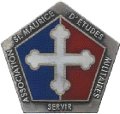
Association Saint-Maurice d’Etudes Militaires (ASMEM)
[No recent report received, the Editor]
Membership 317 Members
Publications
ASMEM-Bulletin 2015
https://www.asmem.ch/bibliotheque/servir-bulletins.html
New edition of:
Julius Rebold – “Histoire de la construction des ouvrages fortifiés fédéraux -
Baugeschichte der Eidgenössische Befestungswerke - 1831-1860 & 1885-
1921"
Events
- Study Tour Austria & Slovenia - 15 to 19 September 2016
- Forecast 2017 France – Soissons
- Excursions
- Sargans & St. Gothard – 11 to 12 June 2016
- Grand-Saint-Bernard & Fort de Bard - with Salons Dufour / Geneva – 23 to 24 July 2016
- Forecast 2017 France - Besançon
Website www.asmem.ch
M. Lovisa / 29.9.2016
GERMANY
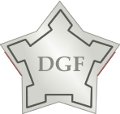
Annual report
Deutsche Gesellschaft für Festungsforschung
Oktober 1, 2017 – September 30, 2018
MEMBERSHIP:
Number of members: 225 (2017: 228)
PUBLICATIONS: (see www.festungsforschung.de/publikationen) (Books, magazines, etc.)
Two issues “Festungsjournal”, Nr. 52, 53.
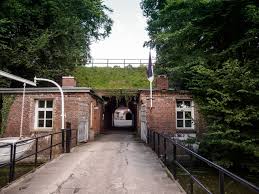 Nr. 52 Festung Grauerort
Nr. 52 Festung Grauerort
One volume “Schriftenreihe Festungsforschung:
Die Residenzstadt Wien an der Donau: Die Geschichte der Stadtbefestigung am Beispiel der Neutorbastion (Festungsforschung, Band 10) (49,95 €)
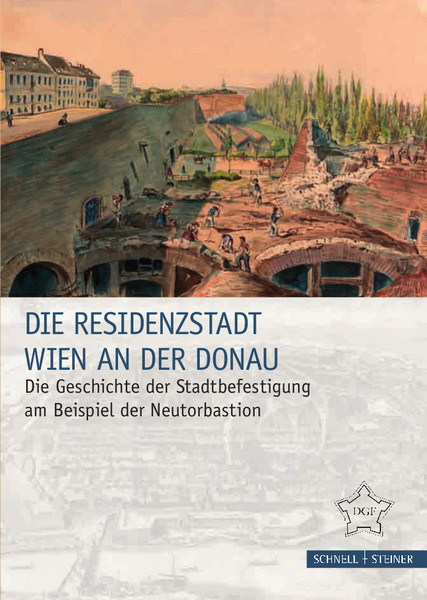
Two volumes „Deutsche Festungen“
- Band IV - 2018 - Festungen in Thüringen (16,95 €)
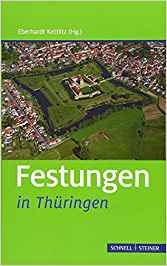
- Band V - 2018 - Festungen in Rheinland-Pfalz und im Saarland (16,95 €)
EVENTS
27th IFC General Assembly 2017 in Jülich (Invitation by Deutsche Gesellschaft
37th DGF Annual Meeting in Magdeburg took place in Magdeburg from 23th to 25th September 2018. The subject: “Artillery in fortresses and siege artillery”.
The 38th DGF Annual Meeting will take place in Esslingen from 13th to 15th September 2019 in Esslingen. Subject: “Early Fortifications in south-west Germany 1450-1620”.
RECENT DEVELOPMENTS
(Conservation, restoration, government ownership, privatisation, vision on the future of monuments)
Advising
Erfurt, Zitadelle Peterberg, event in 2019, counselling
Ingolstadt, Bundesfestung, archaeological works, counselling
WEBSITE
Blog: Fortifica - Deutsche Festungsforschung
REMARKS
Report before restauration works in Jülich, Brückenkopf for 2019.

BELGIUM SIMON STEVIN V.V.C.
Activity Report 2015
1.1 Official meetings
General Assembly: 29-05-2015
Direction committee : 10 meetings: 13/01, 10/02, 10/03, 14/04, 12/05, 09/06, 08/09, 13/10,
17/11, 15/12
An impressive correspondent- and members reunion will be organised in 2017
Member Assembly meeting International Fortress Council (IFC)16 October 2015.
Simon Stevin V.V.C. is host and organises the event including a exclusive study visit to the
Fort of Haasdonk, Fort 5 and the German WW 2 bunker park Den Brandt.
Participation to the vtbKultuur General Assemblies 21/03/2015, 12/09/2015 en 5/12/2015.
Participation to Herita General Assemblies 26/03/2015 en 17/12/2015.
1.2 Activities
Meetings, congresses and preparations:
Various meetings in Raversyde: preparations Simon Stevin Fortress Day 2015
07/05/2015: work meeting with ADAK related to a bunker parc near the bridge over the canal
Dessel-Schoten in Turnhout.
21/11/2015: 50 years of ICOMOS Brussels : participation to the meeting.
Terrain reconnaissance
24-01-15: KW-Bunker Mechelen (Coveniersgilde): visit and reconnaissance
24-01-15: Site Polder Hoboken. Reconnaissance brick / concrete structures next to old
railway track.
18 and 19-07-15, Reconnaissance Fort Leveaux, Ayvelles, citadel Montmedy & Ouvrage La
Ferté.
26-07-15: Reconnaissance Bunker line Steendorp - Temse part 1
30-07-15: Reconnaissance bunker line Steendorp - Temse part 2
10-09-15, Reconnaissance Fort Haasdonk
19-08-15: Reconnaissance To main resistance line of the Spanish Civil War in Palamos.
12-08-15: Reconnaissance 5 days Atlantikwall Somme/Normandy.
22-08-2015 : Reconnaissance Fort Haasdonk.
05-09-15: Reconnaissance Maginot fort Schoenenbourg and Cas Esch
11-10-15: Reconnaissance Fort Vechten (NL)
21-10-15, 3-days voyage with Prof. Luc De Vos and Franky Bostyn areas Arras and the
Somme
18-12-2015: Recognising route Hans-Rudolf Neumann: Fort Saint Marie, Fort Liefkenshoek,
Fort Lillo, Redoute Smoutakker and Antwerp Safety belt.
2. Public activities
2.1 Presentations and congresses
17-05-15: Fortress Belt Antwerp participation with info stands in Fort 2 Wommelgem and Fort
5 Edegem. Overall organisation of a public searching game.
21-08-15: Interview with George Melis about the conservation and protection of the
fortifications at the Costa Brava Spain. Publication in the magazine “Gavarres
17-09-15: Presentation by Frank Philippart about the Atlantikwall in Oostende.
29-09-15: Presentation of the book about the Citadel of Zoutleew 1937-1940 by
correspondent Roger Moria.
03-10-15: Simon Stevin info stand with publications and information at the Open Door Day
Fort Steendorp.
10-10-15: Participation of Simon Stevin V.V.C. at the audit session of Tourism Province
Antwerp.
Simon Stevin V.V.C. Annual Report 2015 pag. 2
2.2 Guided visits
20-06-15: Exclusive presentation and visit at Fort Duffel.
16-10-15: Simon Stevin facilitates IFC visit to Fort Haasdonk, Fort 5 Edegem and WW2
German bunker park Den Brandt.
2.3. Events
Simon Stevin V.V.C. focus on 4 projects :
Fortress belt Antwerp in cooperation with Province of Antwerp.
Fortress Day 2015 in Raveryse – Ostend
Organisation and hosting IFC Antwerp Assembly 2015
Project “Discover Antwerp Fortified – Tourism Flanders.
2.4. Province Antwerp Fortress Belt 17 May 2015:
Simon Stevin V.V.C. Simon Stevin V.V.C. info stand in Fort 2 Wommelgem and Fort 5
Edegem. Overall organisation of a public searching game.
2.5. Fortendag 2015 op 27 September 2015
Fortendag 2015 took place in Raversyde Ostend.
Participants were very positive about the reception and organisation of the Fortress Day.
2.6. Fortification Day in Fort 8 – 8/11/2015
Promotion via the Simon Stevin V.V.C. promotion channels + participation with extended info
stand.
2.7. Preparation pilot project H.R.Neumann 9-16/04/2015
Dr.-Ing. Hans-Rudolf Neumann organises theme-related excursions on fortified heritage
worldwide. The Flemish fortifications (from Coast to Antwerp) will be visited. The program is
prepared and supported by Simon Stevin in close cooperation with Dr.-Ing.Hans-Rudolf
Neumann.
2.8. Digital unlocking of the Simon Stevin archive.
A complete approach and planning is put in place by Lydia Keurvels, archive coordinator of
Simon Stevin V.V.C.
2.9. Simon Stevin Magazine Vesting
Is completely renewed and published in full colour. The magazine is a powerful medium to
bound members and recruit new members and supporters.
2.10. Cooperation with Her
Herita is the Flemish umbrella heritage organisation. Our cooperation includes the
participation in the General Assembly and providing tangible member advantages related to
the public unlocking of fortified structures.
3. Conservation and Protection
3.1. Bredene R505:
Simon Stevin V.V.C.formulated concrete measures based on a former conservation file that
was presented earlier
3.2. Strobrugge (Leopoldskanaal/EDE):
The owner of a terrain, including a large representative troup bunker of the Holland Stellung
has the intention to build a home on it.
The bunker is protected. Based on Simon Stevin V.V.C. recommendations, the owner
includes the bunker in his construction plans and will stay accessible on demand.
3.3. Bunkers of the canal Bochelt-Herentals:
Simon Stevin V.V.C. Annual Report 2015 pag. 3
On the Canal Bochelt-Herentals, 3 Interbellum Bunkers ( 1F 2BF and 2DF) are involved in the
reconstruction of the canal. This bunkers had an historical role in the fights 19144.
Therefore the bunkers should be remained. The city wants to take the necessary measures.
A conservation file for the bunkers was formulated by Simon Stevin V.V.C.
3.4. Liesewege, tobrouks Atlantik Wall :
De SiSt werd door TUCRAIL aangesproken een begroting te maken en deze bunkers volledig
te inventariseren.
3.5. Kanaalbunkers Dessel-Schoten
Simon Stevin participated at the ADAK (Archeology Service of Antwerp Kempen) to discuss
the information infrastructure of the bunker site at the bicycle bridge over the canal Dessel-
Schoten.
This includes the protection of the bunkers, the culture-touristic unlocking of the site and a
official moment related to 100 years Bunkerlinie (2017).
3.6. KW-bunker: De 'Mechelse Colveniersgilde':
This bunker in authentic shape was intensively inventorised by Simon Stevin V.V.C. A
proposition for further unlocking the bunker with visitor information was presented to the
owner.
4. Publications
4.1 Vesting – the Simon Stevin members magazine
2015/01: 20 pages
2015/02: 20 pages
2015//03: 20 pages
2015/04: 20 pages
4.2 Vesting Flash (free online newsletter )
VestingFlash 2015 : 3 editions (03/05, 23/08, 21/10)
4.3 WMF-Newsletter (online newsletter for members - Workgroup Modern
Fortifications)
WMF-news n°2015-01 (13 pages
WMF-news n°2015-02 (7 pages
4.4 Other publications.
The Defence of Costa Brava Central during the Spanish Civil War. – George Melis.
Touristic guide Temse – documented Bunker walk from fort Steendorp to Fort Haasdonk
including plan, information and GPS download.
5. Acquisitions Documentation Center
8 articles, 17 books, 1 DVD, 4 flyers, 24 magazines.
The personal archive of former president Robert Gils was added to the Simon Stevin V.V.C.
archive.
Thanks for this report to Manu Leysen, member of the Simon Stevin V.V.C. direction
comitee.
Luc Olyslager
Chairman Simon Stevin V.V.C.

AUSTRIA
Österreichische Gesellschaft für Festungsforschung
PUBLICATIONS:
EVENTS:
RECENT DEVELOPMENTS

LUXEMBOURG
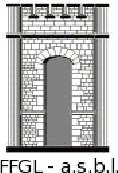



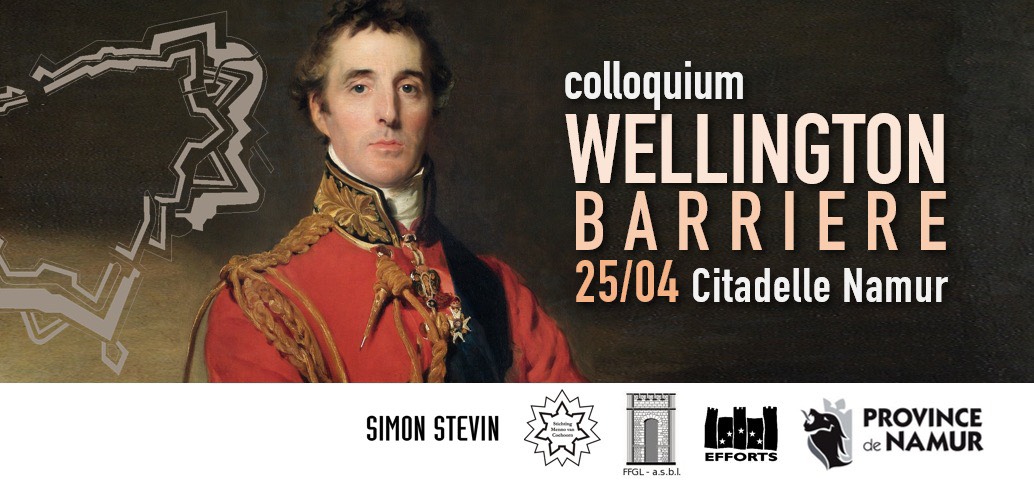
_crop_exp.jpg)
_crop_exp.jpg)
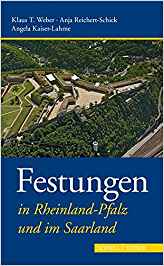
 © International Fortress Council: for the preservation of fortifications +31 6 14479368
© International Fortress Council: for the preservation of fortifications +31 6 14479368 